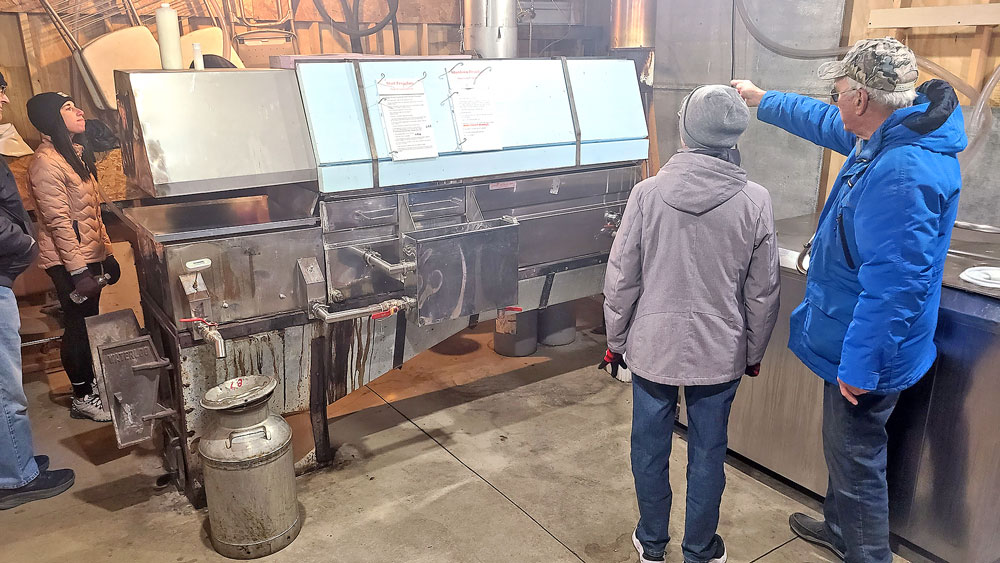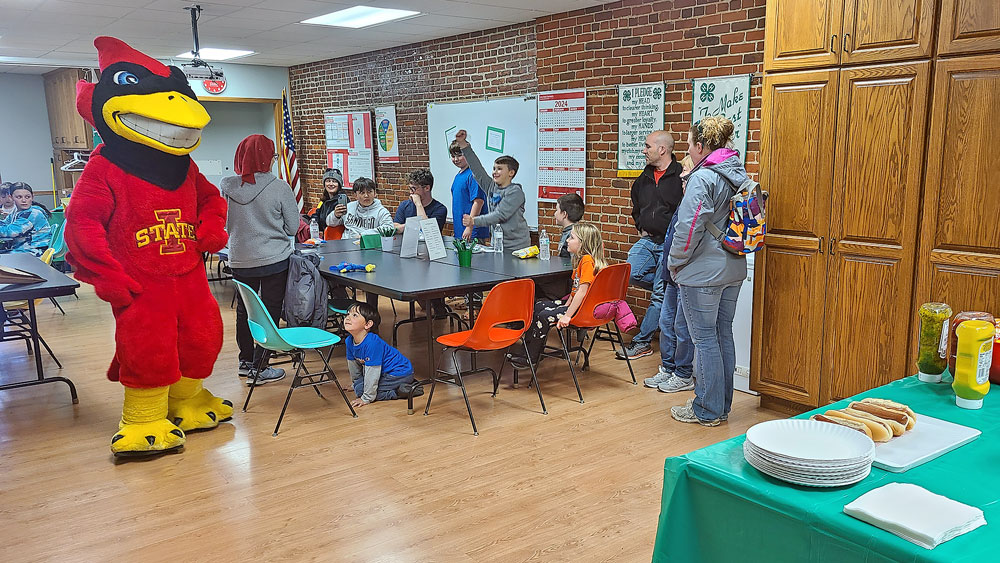School district resumes discussion of high school renovations

By James Grob, jgrob@charlescitypress.com
Air conditioning isn’t typically a major conversation topic during a December cold spell in Iowa.
It was, however, a large part of the discussion last week as directors of the Charles City Board of Education held a work session to try to come to grips with the facility needs of the school district.
“The cooling is non-existent, and the heating is so irregular,” said director Janeice Bergland, referring to Charles City High School.
Jerry Mitchell, Charles City buildings and grounds director, agreed.
“It’s sporadic,” Mitchell said. “We keep them running, but keeping them running is difficult at times. We had a lot of issues with it at the end of the summer.”
The work session last week was to hear and discuss the results of a recent community-wide survey that requested the input of school district residents to help determine how the district can best address its capacity and facility challenges.
The board will hold another work session regarding facilities improvements on Wednesday morning, Dec. 18, at the NIACC building in Charles City, starting at 7 a.m. The public is encouraged to attend.
Charles City Superintendent Mike Fisher said that although he wasn’t yet ready to make a recommendation, he believes that something needs to be done within the next 18 months, which would set possible dates for a bond referendum at March 2020, Sept. 2020 or March of 2021.
Mitchell agreed with the suggested timeline.
“We can keep the building running, but if we don’t get something done in a year or two, we’re going to have to put some money into HVAC (heating, ventilation and air conditioning), electrical and things like that,” he said.
The problem is, according to the survey, public awareness of needed facility improvements is low, and the survey results reflected a relatively low level of support for a possible general obligation bond issue, which would need a 60% majority to pass.
At Monday’s school board meeting, Paul Neuharth from Estes Construction reviewed the facilities needs study Estes completed for the district in Nov. 2018, and discussed a facilities survey completed last month. Neuharth has been with Estes for 30 years. Since 2009, the Iowa Association of School Boards has collaborated with Estes to offer the Iowa Construction Advocate Team (ICAT).
As part of its facilities evaluation service, Estes assesses both the physical and functional needs of a district’s buildings. Items are classified into four categories, with “urgent” meaning assessors believed they need to be completed within one year. “Required” means the project would need to be done in the next five years, “recommended” means the project would need to be done in the next 5-10 years, and “suggested” means the project would need to be done in more than 10 years.
In his assessment summary, Nueharth said the total costs of site, building and health and life safety improvements for all the district buildings assessed would range from about $24 million on the low end to just short of $36 million on the high end. Improvements classified as “urgent” range from $2.9 million to $4.6 million.
Required costs range from $16.6 million to $23.5 million, recommended costs range from $3.8 million to $6 million, and suggested costs range from $383,000 to $1.7 million. More than 68% of the projects were assessed as a required priority, while 35% are recommended, 28% are urgent and 3% are suggested.
Of the facilities assessed, nearly 60% of the work needs to be done at the high school, while about 20% needs to be done at Washington Elementary.
The school district has been looking into a modernization plan for the high school since the new middle school was completed three years ago. The plan was initially called “Phase II.”
In December 2017, architects had presented a two-story concept of what the high school’s floor plan could look like under a $22 million to $23 million renovation budget. In January of 2018, architects presented an estimated $26 million plan that grouped wings together by subjects.
It featured a north STEAM (science, technology, engineering, arts and mathematics) wing; a central humanities (languages, social sciences, English, etc.) wing; and a south CTE (career technical education) wing, which included the current 1961 high school gym, metals and woodworking shop spaces.
The plan, which included 90,000-94,000 square feet of renovated or new construction space, also placed a music/auditorium space in the center of the high school renovation, with quick parking lot access from the Salsbury Avenue entry and the Charles City Middle School/Comet Drive parking lots.
The layout presented rearranged the high school with a main entrance on the west side of the existing high school, opposite of the gymnasium. The school’s main entrance would lead visitors past an administrative office department and immediately into an all-school commons space, in front of a two-story auditorium that would seat about 800.
In February and March of 2018, the district consulted with teachers, coaches and community members regarding the plan, and heard requested additions and alterations.
Little has been done since then. The district turned its attention to other facility priorities — building an on-campus athletic complex and selling the North Grand Building — and high school renovations have not been on the school board agenda for nearly two years.
At the work session last week, CCHS Principal Bryan Jurrens said he has resumed discussions with teachers and coaches at the high school regarding the possibility of renovations, and he intends to have a community meeting with business leaders in the coming weeks.
“We’re having some heavy conversation,” said Jurrens, who added that poor facilities can get in the way of teaching and learning.
For several of those participating in the work session, the often unbearable temperatures in the high school during certain times of the year — and a foul odor that sometimes lingers and sometimes overwhelms — almost seemed to be a symbol of the work that needs to be done at the high school
“If you walk into the school on a wet, sticky day, it smells like a wet dog,” Fisher said. “We have to keep all the windows open and the doors propped open just to keep it ventilated.”
Fisher said that also creates major security issues.
“We have a locked-door, secure facility, but we have doors and windows wide open to ventilate, where someone could walk right in,” he said.
Cael Ruzicka, student school board member, said that the heat in the school is not conducive to learning.
‘I walked into a science room one day and it was 85 degrees and humid, because the teacher had to open up all the windows, probably because of the smell,” Ruzicka said.
Isaiah Tilton, the other student school board member, said the conditions can be “miserable.”
“It’s hard to learn and hard to concentrate,” Tilton said. “Everyone’s sweating.”
“There’s still a prevailing thought among some generations that you don’t need air-conditioning, but human beings have changed,” Fisher said. “Our kids just aren’t used to not being in air-conditioning. It’s difficult during what should be their most productive time of their day.”
“This is a sticking point we see in communities across Iowa, because of aging facilities,” said Jerry Gallagher with Donovan Group, which conducted the survey. “One of the points we try to hammer is the fact that when we all were kids, we maybe didn’t have air conditioning. Everywhere we go today has air conditioning — malls, workplaces, John Deere tractors. Because of that, our bodies have chemically changed. Now we have adjusted to having proper heating and air, and there is data to suggest this. Teaching and learning is impacted in schools that do not have workable heating and air. It is a fact.”
Gallagher said that when he toured the school for the first time, walking from the middle school to the high school was like “night and day.”
“It was dramatic,” he said. “The smell resonated with me in a way that I have not felt in any other building that I’ve been in Iowa. It’s not just that the smell distracts for learning, it’s a matter of what that smell represents in the school that’s not right.”
Director Scott Dight said that he takes offense to people who say “it was good enough for me, it should be good enough for them.”
“Most of those people … now probably all live in houses now with central air and central heat,” Dight said. “They all have air-conditioning in their cars, because you can’t buy a car without air-conditioning anymore. If it was good enough for you to live in a house without air-conditioning then, why do you have it now that you’re in the 50s, 60s and 70s. It’s not that it was good enough, it was that you didn’t have the option then. You have the option now.”
Mitchell said the cooling and heating issues stem from issues with power conduits collapsing. He said there were constant power outages, and there were several outlets in the gym and in the 600 circle in the high school that don’t work. He said that boiler lines are coming apart, and crawl spaces under the circle are just three feet tall and sometimes full of water, so it’s difficult and sometimes dangerous to get work done.
The water has created mold issues — and likely contributes to the smell — and fans are continually running in the crawl spaces. Mitchell said that the bulk of the school’s electrical system is original — built in 1962.
“At that time, when things were built, your conduit was right in the cement,” he said. “Now the cement is collapsing in, so breakers pop and wires get pinched.”
Fisher said that the assessments from Donovan Group and Estes are just two of many perspectives when it comes to renovation of district facilities. He said he plans to get perspectives from finance, facilities, from the high school staff, from students and community engagement before he’s ready to make a recommendation to the board.
“This will inform our strategy moving forward,” Fisher said. “There are multiple strategies on how to approach asking the community for support.”









Social Share